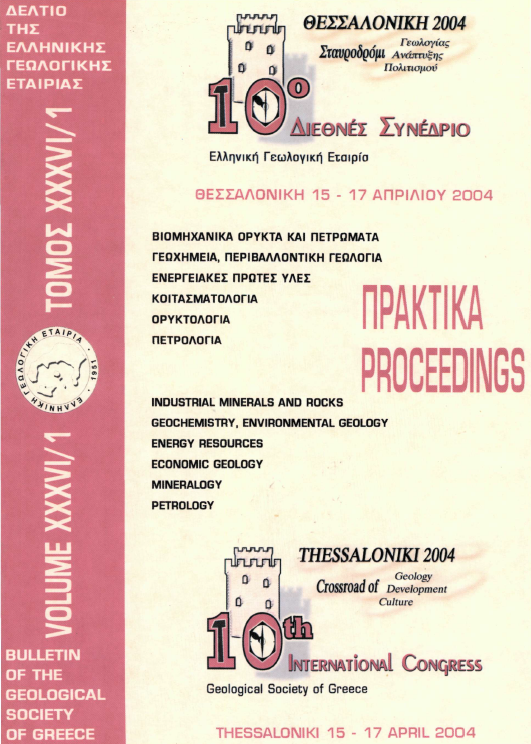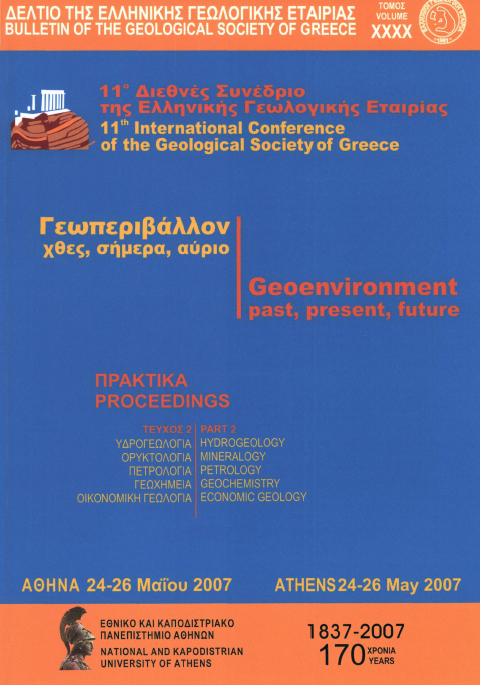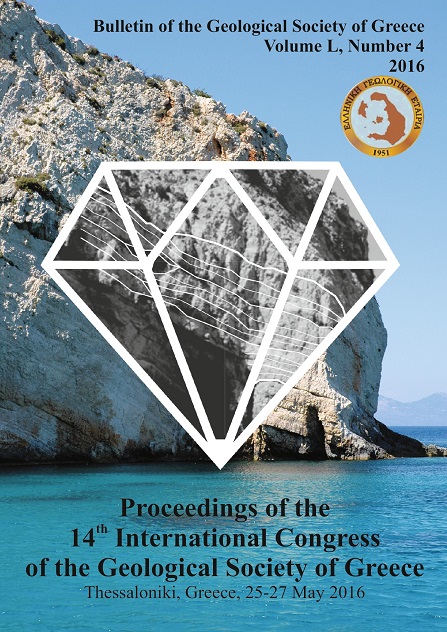THE USE OF DIATOMACEOUS ROCKS OF GREEK ORIGIN AS ABSORBENTS OF OLIVE-OIL WASTERS
Résumé
Diatomite is a multifunctional industrial mineral, having commercial interest in the food/agricultural and the construction sectors and also in environmental applications. Certain diatomite deposits worldwide are used as absorbents and filtering media in industrial scale. In Greece, several types of diatomaceous deposits (calcareous, clayey or amorphous phases-rich) occur in marine or lacustrine Tertiary basins. Bulk samples originated from western Macedonia, Thessaly and the islands of Samos and Milos were characterized, tested and compared concerning their absorption ability against olive mill wastes. The results of the current research show insignificant variations in the absorption ability of the tested Greek diatomites exhibiting equal or better behavior than some of the commercially used absorbents, either diatomaceous, or clayey. Hence, the Greek raw materials could find applications in the prevention of seashores and river banks pollution from the acidic olive-oil wastes.
Article Details
- Comment citer
-
Stamatakis, M., & Stamatakis, G. (2010). THE USE OF DIATOMACEOUS ROCKS OF GREEK ORIGIN AS ABSORBENTS OF OLIVE-OIL WASTERS. Bulletin of the Geological Society of Greece, 43(5), 2739–2751. https://doi.org/10.12681/bgsg.11680
- Rubrique
- Petrology and Mineralogy

Ce travail est disponible sous licence Creative Commons Attribution - Pas d’Utilisation Commerciale 4.0 International.
Authors who publish with this journal agree to the following terms:
Authors retain copyright and grant the journal right of first publication with the work simultaneously licensed under a Creative Commons Attribution Non-Commercial License that allows others to share the work with an acknowledgement of the work's authorship and initial publication in this journal.
Authors are able to enter into separate, additional contractual arrangements for the non-exclusive distribution of the journal's published version of the work (e.g. post it to an institutional repository or publish it in a book), with an acknowledgement of its initial publication in this journal. Authors are permitted and encouraged to post their work online (preferably in institutional repositories or on their website) prior to and during the submission process, as it can lead to productive exchanges, as well as earlier and greater citation of published work.






